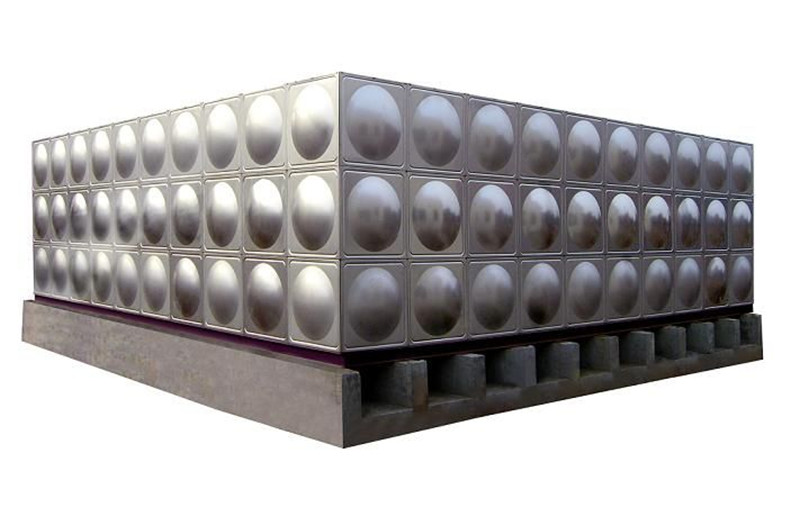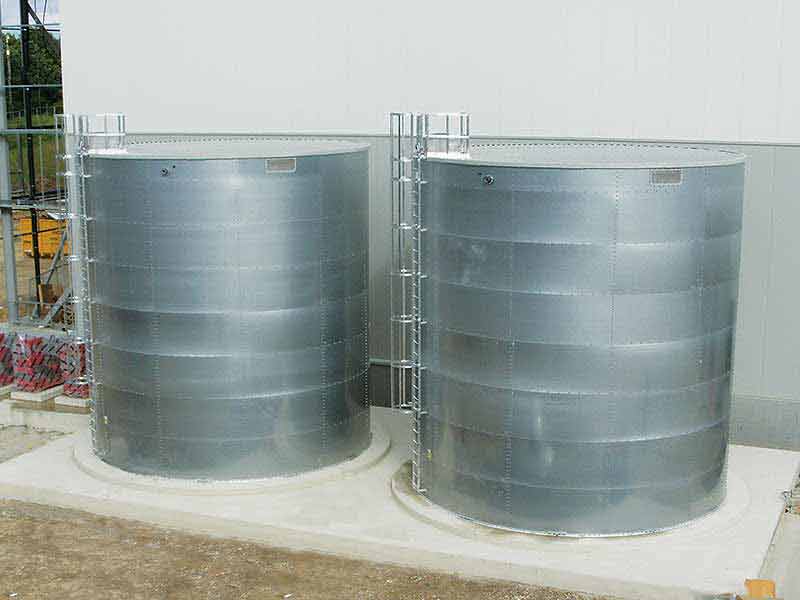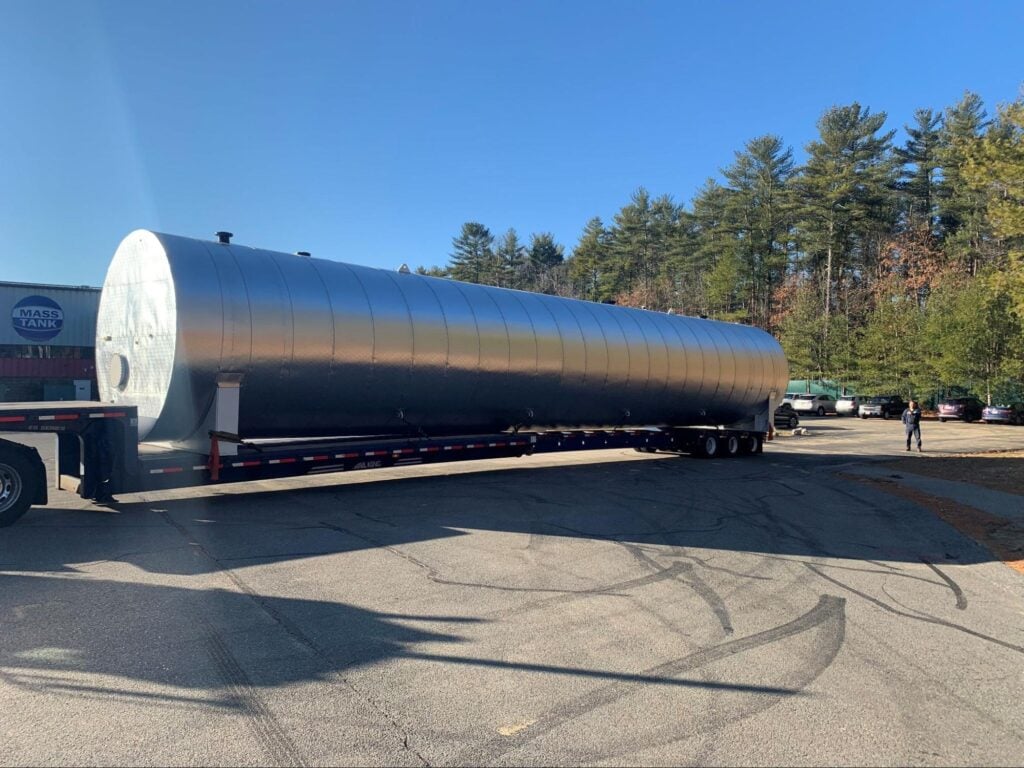Why Buy a Welded Steel Water Storage Tank?
Welded steel water storage tanks satisfy the four basic criteria of low cost, reliability, versatility and availability. Steel structures can be constructed in a variety of shapes, limited only by the imagination of the designer. The three primary categories of storage tank design are reservoirs, standpipes or elevated tanks. In addition, special tank designs are increasingly requested by end users.
When selecting a water storage tank to fill the needs of a city or industry, a comprehensive evaluation should be made of all the alternate designs available. Members of the Steel Tank Institute/Steel Plate Fabricators Association (STI/SPFA) give important factors, such as potential service and economic considerations, the careful attention they deserve.

It is the purchaser’s responsibility to select the size and type of tank to best meet a set of operating conditions. The rules of the American Water Works Association (AWWA) are then applied to the task of designing the appropriate tank. The purchaser will want to consider the following factors in detail.
Cost
What is the total cost of ownership over the tanks expected service life? A value engineering analysis shows that welded steel water storage tanks are the least costly alternative, even if you liberally assume that concrete tanks incur no maintenance expenses.
Reliability
How reliable is the tank over the period of time it is expected to remain in service? A welded steel water storage tank, when constructed and tested according to specifications and properly maintained, is the most reliable type of tank. The steel need only be maintained on its surface. There will be no internal deterioration or progressive degradation of the tank material. Further, the ductility of steel provides a significant measure of safety against unexpected forces resulting from earthquakes, tornadoes and subsidence.
Versatility
How can a tank be fabricated to create a unique visual impact that furthers the image of a community or corporation? How can a tank be built to address unusual needs for storage operation? Steel offers unmatched versatility in both form and function.

Availablility
How available are welded steel water storage tanks? Because of the relatively large number of qualified vendors, welded steel water storage tanks can be constructed to meet your schedule requirements at competitive prices.
Design and Construction
Virtually all water storage vessels in the United States are designed and constructed in accordance with Standard D100 of the American Water Works Association. This is a public standard to be used, without reservation, by anyone involved in water storage.
A water storage tank usually is located in the midst of a heavily populated area, often on the highest elevation available. Public safety is the underlying concern of AWWA Standard D100, a safeguard that has existed since 1935. Anyone dealing regularly wth water storage tanks should obtain a copy of the complete standard.
AWWA D100 offers two different design bases, the standard (or basic) design and an alternate design as outlined in Section 14. The alternate basis permits higher design stresses in return for a more refined engineering design, more rigorous inspection, and the use of shell plate steels with improved toughness. Section 14 is applicable only for reservoirs and standpipes.
Engineering and Materials
How Steel is Supplied
The production of steel plate is a closely controlled procedure, from furnishing the raw material to shipment of the completed product. Steel is inspected at every point of manufacturing to assure uniformity of strength and thickness. This uniformity is very important to the design and engineering of a steel water storage tank. There is no guesswork as to tensile strength, ductility or flexiblility.
Ductility also gives steel the ability to withstand abnormal shocks such as earthquakes, tornadoes, and extreme temperature changes. In this respect, steel surpasses all other materials because it has maximum strength with maximum ductility. The minimum tensile strength of steel normally used for water storage vessels is 55,000 pounds per square inch.

Reliability is a necessity for any water storage vessel. Engineers can depend on steel to do the job for which it was designed, and its reliability includes the ability to withstand many unexpected or emergency conditions that would spell disaster for concrete tanks.
The provision for bottle-tight joints is another area in which steel excels. Joints in steel shell plates are completely watertight and will stay that way for the life of the vessel.
Building a steel water storage tank is a controlled process. All materials used in its construction are subjected to rigid examination. Its erection is carried out to an established standard by a proven technique. Its performance characteristics will be predictableon the day it is completed and after 10 years of service. This is the owner’s assurance that a steel tank will carry the workload as soon as the last plate is welded. And it will continue to do so, even under weathering and conditions of service and stress that would be cause for grave concern if the tank were constructed of any other material.
Loads to Be Considered
Other than the loading from the tank full of water, there are three loads that must be considered in the design of a tank-wind, snow and earthquake. Wind load generally is based on an assumed wind velocity of 100 MPH, although a higher velocity is used in some instances. Snow load is assumed to be 25 PSF of horizontal projected area. This loading generally is used even in areas where snow does not occur.
Because of their flexibility, steel tanks have an excellent safety record in earthquakes. Steel has the ability to absorb large amounts of energy without fracture. The purchaser should specify if provisions for earthquake resistance should be included in the design. The design percentage used, unless otherwise specified by a local code stipulated by the purchaser, shall be determined by the location of the tank with respect to the zones by the seismic risk map published in AWWA Standard D100.
